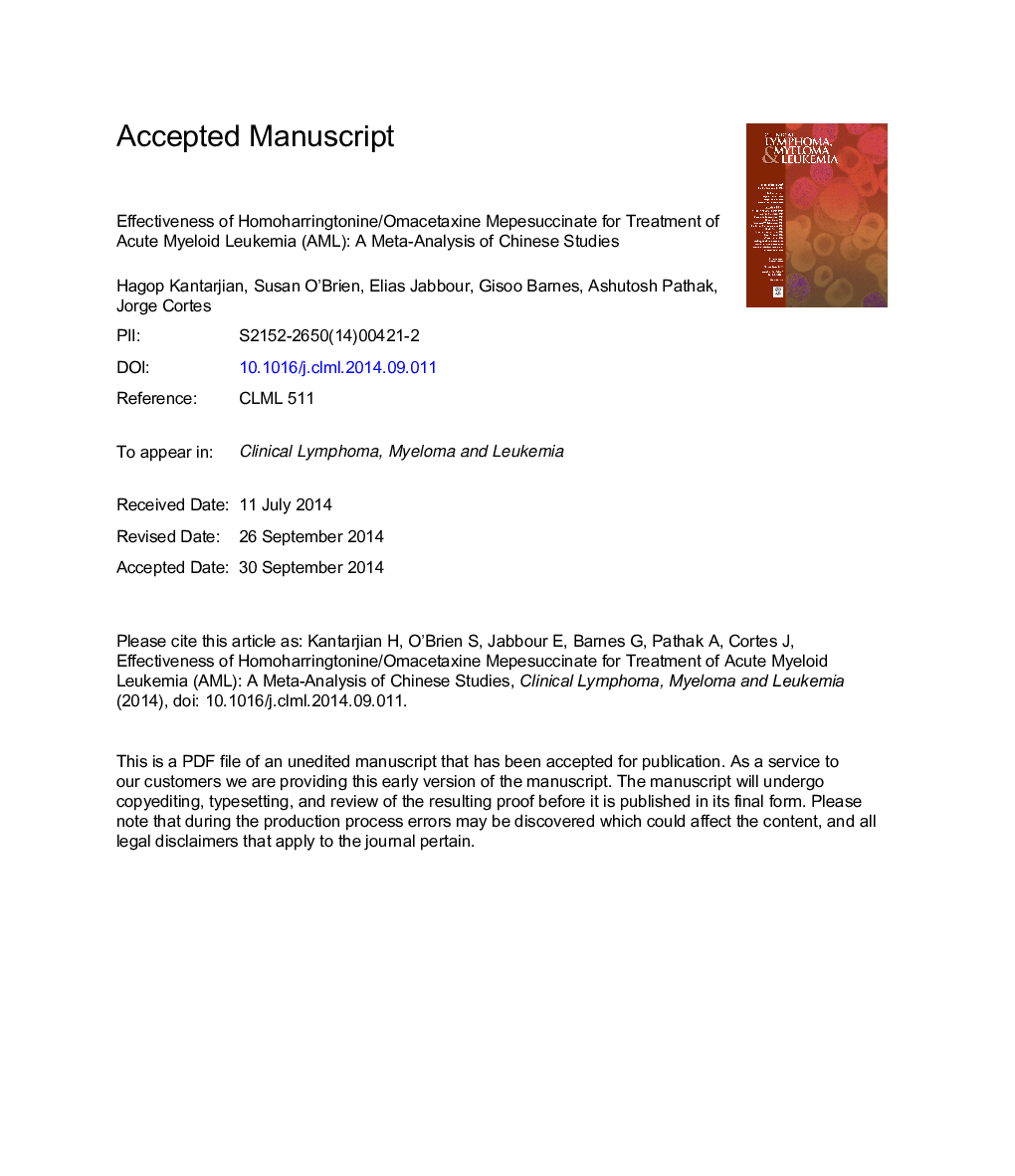| Article ID | Journal | Published Year | Pages | File Type |
|---|---|---|---|---|
| 5882822 | Clinical Lymphoma Myeloma and Leukemia | 2015 | 29 Pages |
Abstract
The present meta-analysis provides an overview on the effectiveness of homoharringtonine (HHT) combination regimens to treat acute myeloid leukemia (AML). Because most of these studies were performed in China, Chinese published clinical studies were used for the analysis. A search for studies from 2006 to 2013 of regimens containing HHT for AML treatment was performed using published studies and Chinese databases in Mandarin. The complete response (CR) and overall response (OR) rates were analyzed, and the fixed effects model and random effects model (REM) were calculated. The heterogeneity of the studies was calculated using Q homogeneity statistics. The meta-analysis included 21 studies (n = 1310, n = 229 pediatric, and n = 216 elderly). HHT was given in combination with cytarabine, daunorubicin, idarubicin, aclacinomycin, mitoxantrone, or granulocyte colony-stimulating factor. Heterogeneity was seen in all analyzed pools, but it was most pronounced in retrospective studies. Overall, the REM showed a CR rate of 65.2%. However, in studies in which HHT-containing regimens were compared to regimens without HHT, the CR rates were 69.1% in randomized trials and 62.8% in retrospective studies. Additionally, in studies with exclusively elderly patients, the CR rate was considerably lower than it was for the studies with mixed age populations (47.5% vs. 65.2%). Higher overall CR rates for HHT-containing regimens in AML treatment in the Chinese studies suggest that HHT could be an active agent in the management of AML. Additional clinical trials are warranted to evaluate the efficacy of HHT in AML treatment.
Related Topics
Health Sciences
Medicine and Dentistry
Anesthesiology and Pain Medicine
Authors
Hagop Kantarjian, Susan O'Brien, Elias Jabbour, Gisoo Barnes, Ashutosh Pathak, Jorge Cortes,
